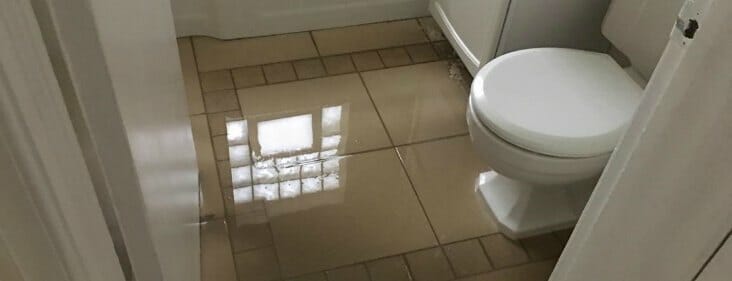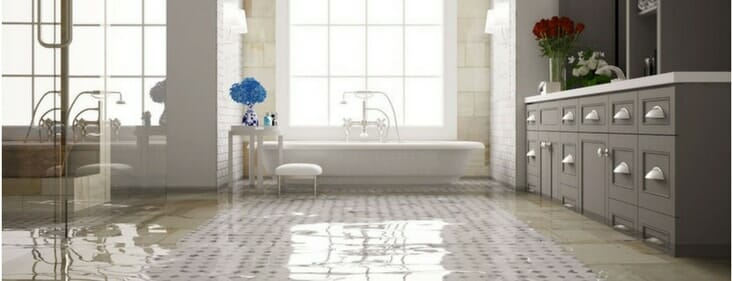Factors Leading to Water Damage in the Bathroom
Factors Leading to Water Damage in the Bathroom
Blog Article
Nearly everybody will have their own unique perception on the subject of How to Repair and Prevent Bathroom Water Damage?.

Water damage typically takes place in the shower room because of the water made use of everyday. Often, the damages could be a little mold from the shower. Various other times, it's large damages on your flooring. Whatever it is, it is always great to understand the reason and also avoid it before it happens.
This overview will experience some of the common causes of water damage in the shower room. We will certainly likewise analyze what you can do to prevent these reasons from damaging your washroom. Allow's dive in.
5 Usual Causes of Water Damage in Bathrooms
These are the common factors you would have water damage in your washrooms and exactly how you can find them:
Burst or Leaking Pipes
There are lots of pipes bring water to different parts of your shower room. Some pipelines take water to the toilet, the sink, the taps, the shower, as well as lots of various other places. They crisscross the little area of the washroom.
Every so often, these pipelines could obtain corroded and also burst. Various other times, human activity could trigger them to leakage. When this occurs, you'll locate water in the edges of your bathroom or on the wall.
To identify this, look out for gurgling wall surfaces, molds, or mildew. Call a specialist emergency situation plumber to fix this when it occurs.
Fractures in your wall floor tilesv
Shower room wall surface tiles have been specially designed for that purpose. They safeguard the wall from moisture from people taking showers. Nonetheless, they are not undestroyable.
Often, your washroom wall surface ceramic tiles fracture and enable some dampness to leak into the wall surface. This can possibly destroy the wall surface if you don't take any action. If you see a fracture on your wall tiles, repair it quickly. Don't wait until it damages your wall.
Overruning bathrooms and sinks
As human beings, occasionally we make errors that could create some water damage in the shower room. For example, leaving your sink faucet on might cause overruning and damage to various other parts of the bathroom with dampness.
Likewise, a faulty commode might cause overruning. For instance, a damaged toilet take care of or other parts of the tank. When this occurs, it can damage the flooring.
As soon as you notice an overruning sink or bathroom, call a plumbing professional to assist deal with it quickly.
Roofing Leakages
In some cases, the problem of water damage to the shower room may not come from the restroom. As an example, a roof leak can cause damage to the washroom ceiling. You can find the damage done by looking at the water spots on the ceiling.
If you locate water stains on your ceiling, check the roofing to see if it's harmed. Then, call an expert to assist solve the issue.
Excess Moisture
It's trendy to have that long shower as well as dash water while you hem and haw as well as act like you're doing, but occasionally these acts might create water damage to your shower room.
Splashing water around can cause water to go to edges as well as form mold and mildews. Enjoy just how you spread out excess moisture around, as well as when you do it, clean it up to avoid damage.
Verdict
Water damage to your restroom can be bothersome. Nonetheless, you can manage it if you protect against several of the causes mentioned in this overview. Call an expert emergency plumbing technician if you observe any type of serious damage.
How to Repair a Water-Damaged Wall in the Bathroom
All you need to know to repair bathroom wall water damage – from identifying the water source to finishing the repair professionally. If you don’t act quickly to resolve a water damage problem, you could find that it develops into a mold issue and/or cause structural damage to your home. Follow this guide to repair your bathroom before it's too late.
All you need to know to repair bathroom wall water damage
Water damage is a common household problem, and one that, if left unrepaired, can quickly lead to structural problems and health issues. The two most likely rooms where water damage may occur is the bathroom and the kitchen – where water is used often and there is high humidity.
What is water damage?
It is easy to think of water damage as caused by a flood or leaking tap or burst water pipe. However, when water damage is assessed, there are three main categories into which water falls (as classified by the American National Standards Institute). These categories are defined as:
Category 1 Water – ‘Clear Water’
This is sanitary water. There is usually no major threat to health by washing with this water, drinking it, or inhaling if it is streaming. Most water that enters your home will be category 1 water, while most water leaving your home will be either category 2 or 3 water. It may also come from melting snow, rainwater and water tanks.
Damage caused by this type of water can usually be repaired or restored, though this doesn’t mean that there are no potential health issues.
Category 2 Water – ‘Grey Water’
This is contaminated water – sometimes considerably so – and will cause illness if consumed or if it comes into contact with your skin. Water damage in this category is often caused by overflows from toilet bowls, and damage to washing machines and dishwashers. While damaged items might still be repaired or restored after damage by grey water, it is more difficult and more expensive to do so.
If the water damage in your home has been caused by grey water, it is advisable to have repairs made by professionals.
Over time, grey water will deteriorate and become black water.
Category 3 Water – ‘Black Water’
Category 3 water, also known as black water, is highly contaminated and a great risk to health. This may contain raw sewage, heavy metals, and other toxic substances. It will smell terrible.
If this is the water that has caused damage in your bathroom, do not touch it. Stop the water flowing if possible, seal the room and call the experts: it really isn’t worth the risk of ill health and disease that could be fatal. It is very unlikely that items can be repaired or restored if they have been damaged by black water.
https://www.porterscleaning.com/blog/how-to-repair-a-water-damaged-wall-in-the-bathroom/

How to Repair a Water-Damaged Wall in the Bathroom
All you need to know to repair bathroom wall water damage – from identifying the water source to finishing the repair professionally. If you don’t act quickly to resolve a water damage problem, you could find that it develops into a mold issue and/or cause structural damage to your home. Follow this guide to repair your bathroom before it's too late.
All you need to know to repair bathroom wall water damage
Water damage is a common household problem, and one that, if left unrepaired, can quickly lead to structural problems and health issues. The two most likely rooms where water damage may occur is the bathroom and the kitchen – where water is used often and there is high humidity.
What is water damage?
It is easy to think of water damage as caused by a flood or leaking tap or burst water pipe. However, when water damage is assessed, there are three main categories into which water falls (as classified by the American National Standards Institute). These categories are defined as:
Category 1 Water – ‘Clear Water’
This is sanitary water. There is usually no major threat to health by washing with this water, drinking it, or inhaling if it is streaming. Most water that enters your home will be category 1 water, while most water leaving your home will be either category 2 or 3 water. It may also come from melting snow, rainwater and water tanks.
Damage caused by this type of water can usually be repaired or restored, though this doesn’t mean that there are no potential health issues.
Category 2 Water – ‘Grey Water’
This is contaminated water – sometimes considerably so – and will cause illness if consumed or if it comes into contact with your skin. Water damage in this category is often caused by overflows from toilet bowls, and damage to washing machines and dishwashers. While damaged items might still be repaired or restored after damage by grey water, it is more difficult and more expensive to do so.
If the water damage in your home has been caused by grey water, it is advisable to have repairs made by professionals.
Over time, grey water will deteriorate and become black water.
Category 3 Water – ‘Black Water’
Category 3 water, also known as black water, is highly contaminated and a great risk to health. This may contain raw sewage, heavy metals, and other toxic substances. It will smell terrible.
If this is the water that has caused damage in your bathroom, do not touch it. Stop the water flowing if possible, seal the room and call the experts: it really isn’t worth the risk of ill health and disease that could be fatal. It is very unlikely that items can be repaired or restored if they have been damaged by black water.
https://www.porterscleaning.com/blog/how-to-repair-a-water-damaged-wall-in-the-bathroom/
We were made aware of that editorial on How to Repair and Prevent Bathroom Water Damage? through an associate on another web address. Feel free to set aside a second to share this blog posting if you appreciated it. I value reading our article about How to Repair and Prevent Bathroom Water Damage?.
Your search ends; experts here. Report this page